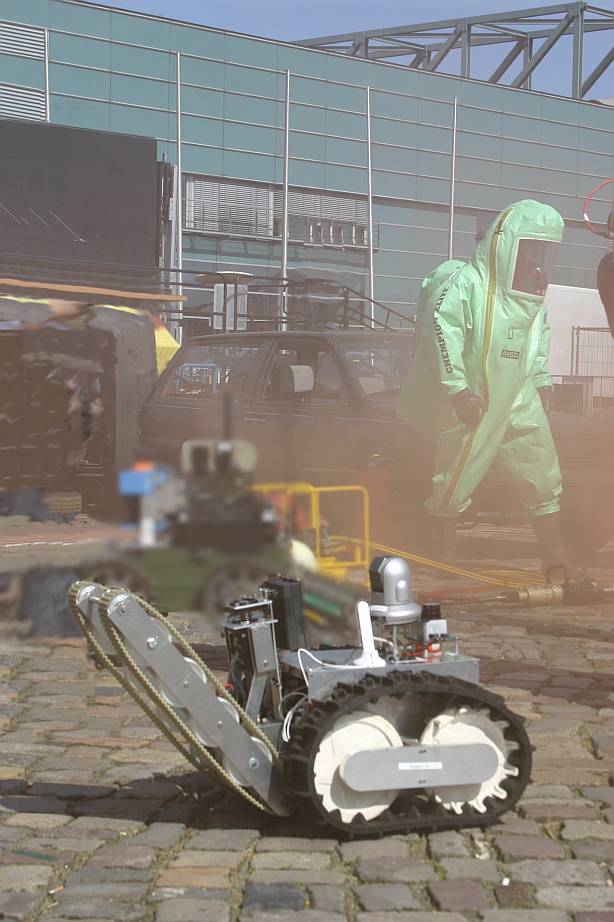
Response robots, also known as Search and Rescue (SAR) robots, respectively as Safety, Security, and Rescue Robotics (SSRR), is a research field dealing with systems that support first response units in disaster missions. Especially mobile robots can be highly valuable tools in urban rescue missions after catastrophes like earthquakes, bomb- or gas-explosions or daily incidents like fires and road accidents involving hazardous materials. The robots can be used to inspect collapsed structures, to assess the situation and to search and locate victims. There are many engineering and scientific challenges in this domain. Rescue robots not only have to be designed for the harsh environmental conditions of disasters, but they also need advanced capabilities like intelligent behaviors to free them from constant supervision by operators.
The idea to use robots in rescue missions is supported since several years by RoboCup, a well-known international research and education initiative in Artificial Intelligence (AI) and robotics. Already in the summer of 2000, there was a demo event at the RoboCup world championship in Melbourne, Australia where the potential of this field was demonstrated. RoboCupRescue is since then a regular part of RoboCup with dozens of teams applying to participate in the real robot and simulation competitions. The constantly increasing high popularity of this field can be explained by the strong application potential of currently existing systems, which in addition still leave substantial room for further improvements through basic research on core issues of AI and robotics.
The Robotics Group at Constructor University is since 2001 actively engaged in this research field, i.e., to some extent also under the previous names of the institution, i.e., IUB and Jacobs. Related projects and activities include among others:
- underwater bridge inspection in the context of floods
- 3D mapping in unstructured environments
- robot developments using the CubeSystem
- …
UNDER CONSTRUCTION